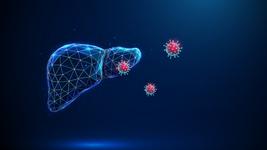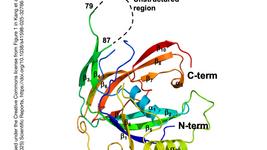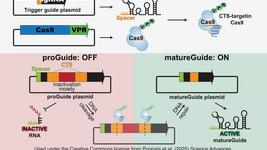CMN Weekly (11 July 2025) - Your Weekly CRISPR Medicine News
By: Gorm Palmgren - Jul. 11, 2025
Top picks
- Live androgenetic mice from two sperm cells have been generated using CRISPR-based epigenome editing. By selectively modifying DNA methylation at seven imprinting control regions, the Chinese researchers overcame barriers to mammalian androgenesis. The success of these mice reaching adulthood demonstrates that targeted imprinting edits can enable viable development using only paternal genomes.
- CRISPR-Cas9 screens in uveal melanoma – a rare eye cancer – identified CDS2 as essential in cells with low CDS1 expression, revealing a synthetic lethal interaction. CDS2 knockout disrupted phosphoinositide synthesis and induced apoptosis, effects reversible by CDS1 re-expression. Pan-cancer analysis confirmed broader relevance, positioning the CDS1/CDS2 axis as a potential therapeutic vulnerability in multiple tumour types.
Research
- Researchers propose microphysiological systems (MPS) as more predictive models for assessing CRISPR-Cas9 safety and efficacy. Unlike immortalised cell lines or rodent models, MPS better replicate human tissue physiology, potentially enabling more accurate evaluation of both on- and off-target effects. This approach could streamline preclinical development and improve translatability of CRISPR-based therapies for clinical use.
- American researchers have developed an efficient CRISPR-Cas9 method to edit CD34+ human cord blood cells before transplanting them into mice, generating humanised models with targeted gene knockouts in the immune system. This approach allows in vivo analysis of human gene function, overcoming key limitations of traditional mouse models and advancing disease research with greater physiological relevance.
- CRISPR cytosine base editors have been refined through directed evolution of enzyme recognition loops to enable highly precise DNA editing with minimal bystander effects. Researchers engineered variants of the E. coli tRNA adenosine deaminase (TadA), generating a panel of cytosine-specific editors that act in defined nucleotide contexts and achieve greater accuracy than conventional editors in disease and cancer models.
- CRISPR-Cas9 knockout of CDX2 in colorectal cancer cell lines increased migration and tumour budding, linking CDX2 loss to enhanced invasiveness. Phenotypes were reversed via CDX2 re-expression or CRISPR-SAM activation. Multiplex imaging of tumours and xenografts confirmed reduced CDX2 and E-cadherin in budding regions. Findings underscore CDX2’s role in suppressing epithelial-mesenchymal transition and CRC aggressiveness.
- Australian researchers have used CRISPR-Cas9 to delete PD-1 in islet-specific CD4+ T cells in diabetic mice and found this disrupted bystander suppression of autoreactive CD8+ T cells. PD-1 loss enhanced CD4+ T cell activation and islet infiltration, indirectly boosting CD8+ effector responses and accelerating diabetes. The findings highlight PD-1’s role in CD4+ T cell–mediated maintenance of peripheral tolerance.
- Using CRISPR-based epigenome editors, researchers reactivated fetal γ-globin expression by demethylating its promoters with dCas9-Tet1, alone or combined with targeted histone acetylation. This approach reversed key disease features in sickle cell patient-derived erythroid cells, confirming DNA methylation as a major repressor of γ-globin. The method shows high specificity and therapeutic promise for β-hemoglobinopathies.
- CRISPR-engineered dental pulp stem cells (DPSCs) overexpressing BDNF have been shown to enhance dentin regeneration in a mouse tooth injury model. Inflammation amplified TrkB signalling during odontogenic differentiation, and transcriptomic analysis revealed key immune and extracellular matrix pathways involved. These findings support CRISPR-based DPSC engineering as a promising strategy for improving dental tissue repair.
Screening
- A CRISPR-Cas9 screen identified miR106a as a key regulator of X chromosome inactivation via modulation of the Xist RNA interactome. Inhibiting miR106a destabilises Xist, partially reactivating the inactive X chromosome. In a Rett syndrome mouse model, this approach improved survival and neurological function, suggesting therapeutic potential for X-linked disorders by targeting small RNA pathways.
- A whole-genome in vivo CRISPR-Cas9 screen identified POU3F3 as a key regulator of sorafenib resistance in hepatocellular carcinoma. POU3F3 enhances transcription of retinoic acid metabolism genes, promoting ferroptosis resistance via increased retinoic acid. Inhibiting POU3F3 with rosarin sensitised HCC cells to sorafenib in vitro and in vivo, highlighting a promising combinatorial strategy to overcome therapeutic resistance.
- A CRISPR-Cas9 kinome screen – targeting all kinase genes – revealed EGFR as a key modulator of KRAS-mutant tumour sensitivity to the pan-RAS inhibitor RMC-7977. EGFR inhibition synergised with pan-RAS blockade across multiple KRAS-mutated cancer models, enhancing suppression of MAPK signalling and tumour growth. These findings support combined EGFR and pan-RAS inhibition as a promising therapeutic strategy for diverse KRAS-driven cancers.
- A genome-scale CRISPR-Cas9 knockout screen identified ERAP2 as a key mediator of cisplatin-induced nephrotoxicity in renal proximal tubular epithelial cells. ERAP2 expression was upregulated by cisplatin, and its inhibition reduced cell injury and necroptosis-associated gene expression. These findings suggest ERAP2 as a potential therapeutic target to mitigate cisplatin-induced kidney damage.
Delivery
- A novel CRISPR-Cas12a-responsive DNA hydrogel disassembles upon detecting target genomic sequences, enabling precise payload release. Activated by conserved Salmonella regions, the hydrogel released diverse cargo, including drugs and imaging agents, with high specificity and sensitivity down to 50 genome copies. This programmable system offers a promising platform for biosensing, diagnostics, and targeted therapeutic delivery.
Clinical
- Backed by $20 million from the Chan Zuckerberg Initiative, UCSF’s new Center for Pediatric CRISPR Cures will use bespoke CRISPR-Cas therapies to treat rare genetic diseases in children. Initial trials will edit disease-causing mutations in vivo, following a model proven in a single-patient case. The project aims to streamline regulatory approval and expand CRISPR’s accessibility for ultra-rare paediatric conditions.
Reviews
- Expanding horizons of CRISPR applications beyond genome editing. This review explores the expanding applications of CRISPR-Cas beyond genome editing, highlighting advances in diagnostics, biosensing, gene regulation, imaging, protein interaction mapping, and single-cell analysis.
- Development of Inorganic and Hybrid Nanosystems for Delivery of CRISPR-Based Gene Editors. This review examines the underexplored potential of solid-core nanoparticles, such as gold and silica, as delivery vehicles for CRISPR-Cas9, highlighting their advantages over viral and lipid-based systems in terms of stability, immunogenicity, and organ-specific targeting.
- Applications of CRISPR-Cas9 in mitigating cellular senescence and age-related disease progression. This review discusses the potential of CRISPR-Cas9 to target genetic and epigenetic drivers of ageing, such as telomere attrition, DNA repair deficiencies, and inflammation, with the aim of mitigating age-related diseases and promoting healthy longevity.
- Harnessing CRISPR/Cas9 to overcome targeted therapy resistance in non‑small cell lung cancer: Advances and challenges. This review examines CRISPR-Cas9 applications in addressing drug resistance in non-small cell lung cancer by targeting oncogenic drivers such as EGFR, KRAS, and ALK, highlighting advances in reversing resistance, enhancing targeted therapy, and outlining challenges for clinical translation.
- CRISPR/Cas9 genome engineering in PDAC: from preclinical studies to translation and clinical research. This review highlights the multifaceted use of CRISPR-Cas9 in pancreatic ductal adenocarcinoma research, from gene function studies and drug resistance to screening platforms, immune interactions, and precision diagnostics for CAR-T cell therapies.
Detection
- Researchers in the USA have developed a CRISPR-Cas12a-enhanced fluorescent assay for ultrasensitive detection of neurofilament light chain (NfL), achieving a detection limit of 0.012 pg/mL. Combining antibody-coated magnetic beads, DNA-loaded gold nanoparticles, and CRISPR amplification, the method demonstrated high specificity and accurate recovery in serum-like samples. This platform shows strong diagnostic potential for monitoring neuronal damage in neurological diseases.
- Using CRISPR-Cas12a and blood direct PCR, researchers developed HiMDA, a high-throughput assay for detecting gene and cell doping. The method enables multiplexed, on-target identification of exogenous genes from just five μL of blood within 90 minutes. HiMDA outperforms current standards in sensitivity, detecting as few as 2.5 copies, and can confirm doping up to 10 days post-intervention.
- SPARC is a dual-channel CRISPR-Cas12a/Cas13a assay enabling ultra-sensitive and highly specific detection of single-nucleotide variants. By combining AsCas12a for conserved targets and LbuCas13a for SNV discrimination, it resolves diagnostic ambiguity and detects down to 1 aM. Applied to hepatitis B virus, SPARC accurately identified YMDD resistance mutations, demonstrating strong potential for clinical diagnostics and precision medicine.
To get more CRISPR Medicine News delivered to your inbox, sign up to the free weekly CMN Newsletter here.
Tags
ArticleMissing linksNewsCMN WeeklyCRISPR Therapeutics AGPrecision BioSciences, Inc.SynthegoVor Biopharma
CLINICAL TRIALS
IND Enabling
Phase I
Phase II
Phase III
Gastric Cancer and Colorectal Cancer, CRC, (NCT07166263)
Sponsors:
Base Therapeutics (Shanghai) Co., Ltd.
Sponsors:
Base Therapeutics (Shanghai) Co., Ltd.
IND Enabling
Phase I
Phase II
Phase III
Relapsed or Refractory Acute Myeloid Leukemia, AML, (NCT06541444)
Sponsors:
Base Therapeutics (Shanghai) Co., Ltd.
Sponsors:
Base Therapeutics (Shanghai) Co., Ltd.
IND Enabling
Phase I
Phase II
Phase III







